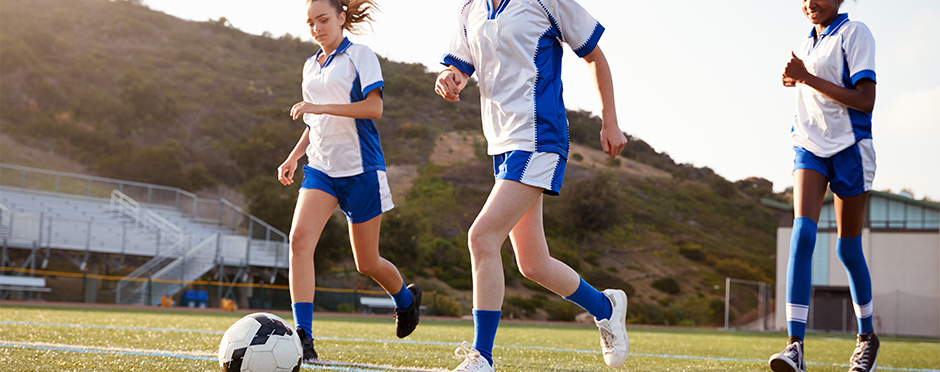
How to Reduce Your Risk of ACL Injuries
Leave a CommentCo-author: Dylan Webster, SPT, XPS
If you have been following sports over the past few years you may have noticed there has been an increase in anterior cruciate ligament or ACL tears in both men’s and women’s sports. You may be asking yourself if there is anything they can be doing to reduce their risk of a knee injury especially if you have young athletes in your home participating in sports such as football, soccer and basketball. Is it even possible to reduce your risk of a knee injury in general? Luckily the answer is…absolutely!
A multitude of exercise programs and studies have shown promising results for reducing the dreaded ACL injury and the impact it can have on the athlete and their team.1 A few have even shown a reduction of ACL tears by upwards of 80%.1
At Athletico, we started the ACL 3P program which stands for Prevention, Progression, and Performance, in an effort to reduce the number of knee injuries in sports and improve the outcomes for athletes. If you have questions about the ACL Prevention Program, here are some commonly asked questions.
Who Benefits the Most?
A wide range of sports and ages have been shown to benefit from ACL injury reduction programs, but those who benefit the most are commonly soccer players, especially females under the age of 18.1 This being said, the conclusion drawn from the most recent clinical practice guideline that helps direct medical providers on the best available evidence states that athletes aged 12-25 years of age who are involved in sports with a high risk of ACL injury should partake in an exercise-based ACL injury prevention program.
When Should My Athletes Start?
It is best to start in the preseason to become accustomed to the program and continue performing the program throughout the season.
What is the Time Commitment for my Athlete?
20-30 minutes, 2-3 times per week is all that is required to greatly decrease your athletes’ risk of an ACL tear. To optimize time, most ACL programs are completed as a warm-up routine before the actual training session begins.
Should We Stop During the Season?
No. One of the most important things to realize is that consistency is key. If you complete the program consistently during the off-season and in-season, your athletes’ risk of injury will lower, but only if you maintain a completion rate of 2-3 times per week.
What Should the Program Include?
The five key components of most programs are lower extremity and core strengthening, sport specific plyometrics, multi-directional running, and dynamic flexibility exercises.
Examples of each key component to an ACL Prevention Program.
Flexibility (dynamic stretches)
|
Running
|
Strength
|
Core
|
Plyometrics
|
How Do I Get a Professionally Made Program Specific to My Sport?
The experts at Athletico can build you a research backed, expertly crafted program, ready to be implemented today.
To get more information about Athletico’s 3P ACL program as well as schedule an ACL Risk assessment with one of our specially trained clinicians, find the Athletico 3P ACL specialist closest to you. An Athletico expert will assess your risk and, if appropriate, begin treatment to help reduce the risk of injuring your knee.
During the COVID-19 pandemic, Athletico clinics are remain open to treat patients in-clinic or online through our telehealth virtual visits. For athletes, this down time in sports is a good time to take help yourself improve through reducing your risk of injury.
Find an ACL Specialist Near You
The Athletico blog is an educational resource written by Athletico employees. Athletico bloggers are licensed professionals who abide by the code of ethics outlined by their respective professional associations. The content published in blog posts represents the opinion of the individual author based on their expertise and experience. The content provided in this blog is for informational purposes only, does not constitute medical advice and should not be relied on for making personal health decisions.
References:
1. Arundale AJ, Bizzini M, Giordano A, et al. Exercise-Based Knee and Anterior Cruciate Ligament Injury Prevention. Journal of Orthopaedic & Sports Physical Therapy. 2018;48(9). doi:10.2519/jospt.2018.0303.
